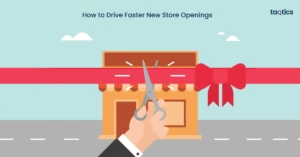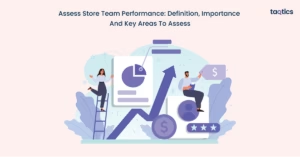Store Team Training: Definition, Importance And Key Areas To Focus
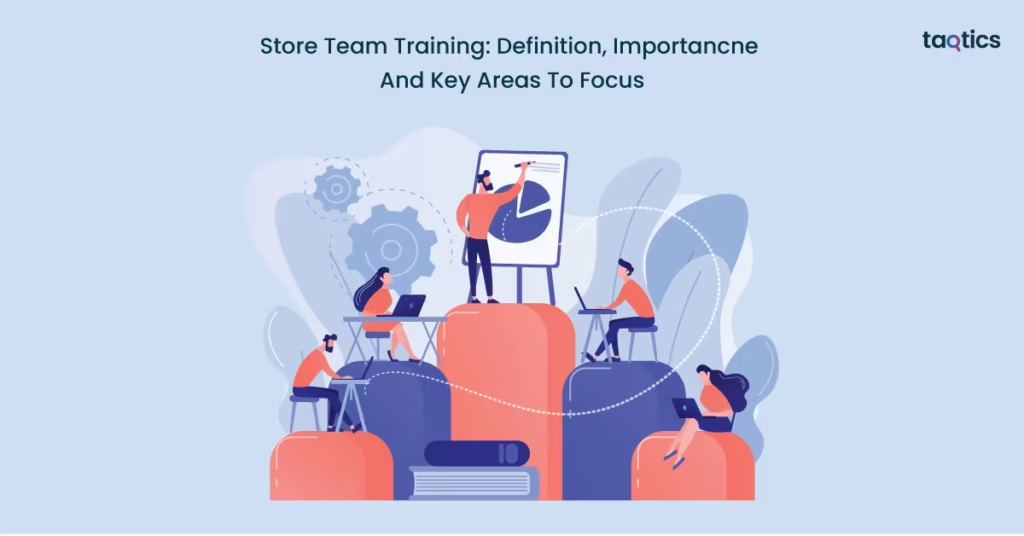
Store Team Training is the structured process of equipping retail employees with the knowledge, skills, and behaviors required to perform their roles effectively. Store Team Training ensures that frontline staff not only understand company policies and product offerings but also deliver consistent and high-quality customer experiences across all touchpoints. In today’s competitive retail environment, training is no longer optional. According to a 2024 LinkedIn Workplace Learning Report, 94% of employees say they would stay at a company longer if it invested in their learning and development. Additionally, retailers with strong training programs experience up to 21% higher profitability, as reported by the Association for Talent Development (ATD).
Effective training directly correlates with improved employee performance, lower turnover, and increased customer satisfaction. For example, the National Retail Federation (NRF) notes that well-trained store associates contribute to a 30% improvement in customer retention. Key areas of focus should include product knowledge, customer service, sales techniques, compliance and safety protocols, and leadership development. By investing in comprehensive training strategies tailored to store teams, retailers can create a more engaged workforce, reduce operational errors, and ultimately drive long-term business success.
What Is Store Team Training?
Store Team Training is the process of developing the skills, knowledge, and behaviors of retail staff to ensure smooth store operations and exceptional customer service. Store Team Training prepares employees to handle tasks ranging from inventory management and point-of-sale systems to conflict resolution and upselling techniques. According to a report by Axonify, 81% of frontline employees say that training makes them feel more confident and engaged in their roles. Moreover, retailers who implement effective training programs see a 24% increase in customer satisfaction and a 22% improvement in employee performance, based on data from the Brandon Hall Group.
At its core, store team training aligns employee capabilities with business goals. It ensures consistency in service delivery, strengthens brand reputation, and reduces costly errors or compliance issues. With the retail landscape constantly evolving due to technology and shifting consumer expectations, ongoing training is critical for maintaining a competitive edge.
What Is The Importance Of Store Team Training?
The importance of store team training helps build a high-performing, customer-focused workforce. It not only improves daily operations but also supports long-term business growth by enhancing employee performance, satisfaction, and loyalty.
- Increased Sales and Revenue: Companies with robust training programs see 218% higher income per employee, according to the ATD report.
- Improved Customer Experience: 73% of consumers say customer experience heavily influences their purchasing decisions, according to a PwC report.
- Enhanced Employee Engagement and Retention: 94% of employees would stay longer at companies that invest in learning and development, per LinkedIn.
- Boosted Productivity: According to Gallup, trained employees are up to 17% more productive.
- Stronger Brand Reputation: Consistent and knowledgeable service across all locations builds trust and strengthens brand image.
- Better Problem-Solving: Employees feel more confident and capable when addressing customer concerns or operational issues.
- Increased Product Knowledge: Informed staff can upsell and cross-sell effectively, increasing basket size by up to 20%, according to a Retail TouchPoints report.
- Improved Teamwork and Communication: Training fosters better collaboration, reducing conflicts and improving store efficiency.
- Adaptability to Change: Training helps staff adapt quickly to new technologies, procedures, or company initiatives.
- Reduced Staff Turnover: Per Work Institute, lack of development opportunities is a top reason employees leave; replacing a worker can cost up to 33% of their annual salary.
Investing in store team training isn’t just a short-term fix, it’s a long-term strategy that empowers employees, delights customers, and boosts the bottom line. A well-trained team is the foundation of any successful retail operation.
What Are The Key Areas To Focus In Store Team Training
The key areas to focus in store team training focus store team training on the areas that directly impact daily operations and customer satisfaction. By targeting specific skills and knowledge gaps, businesses can empower employees to perform more confidently and efficiently on the sales floor.
Product Knowledge
Employees need to be thoroughly familiar with the products they sell, including features, benefits, variations, and proper usage, to confidently assist customers and drive informed purchasing decisions. Well-informed staff can offer tailored recommendations, answer questions accurately, and handle objections more effectively, leading to increased customer trust and higher sales.
According to a study by Salesforce, 83% of shoppers expect sales associates to be as knowledgeable as the brand’s website or better. Additionally, research by Retail TouchPoints found that product knowledge training can boost average transaction value by up to 19%. When store teams are trained to understand and communicate product details clearly, it not only enhances the customer experience but also helps reduce returns and complaints, ultimately benefiting the bottom line.
Customer Service
Customer service is a core focus area in store team training, as it directly influences customer satisfaction and loyalty. Training should emphasize key skills such as effective communication, active listening, empathy, and conflict resolution. When employees are trained to handle customer interactions professionally and positively, they can create memorable shopping experiences that encourage repeat business.
According to a report by HubSpot, 93% of customers are likely to make repeat purchases with companies that offer excellent customer service. Additionally, PwC found that 32% of consumers will stop doing business with a brand after just one bad experience, highlighting the high stakes of frontline service quality. Equipping store teams with strong customer service skills not only builds brand loyalty but also increases the likelihood of positive word-of-mouth and long-term revenue growth.
Sales Techniques
Training in effective sales techniques is essential for maximizing revenue and enhancing the customer buying experience. Store employees should be equipped with strategies such as upselling, cross-selling, and consultative selling, where they actively listen and align product recommendations with customer needs. These techniques not only increase the average transaction value but also help build trust by offering solutions that genuinely benefit the shopper.
Data from Forrester shows that cross-selling and upselling can increase revenue by 10–30%, while Salesforce reports that 75% of customers expect personalized product suggestions based on their needs. By focusing on sales techniques in store team training, retailers can turn everyday interactions into meaningful conversions, boosting both short-term sales and long-term customer loyalty.
Operational Procedures
Understanding and efficiently executing operational procedures is a key area of focus in store team training. Employees must be trained on essential day-to-day tasks such as point-of-sale (POS) system usage, transaction processing, inventory management, store opening/closing routines, and safety protocols. Proper training in these areas ensures smoother operations, reduces errors, and helps maintain a seamless shopping experience for customers.
According to the National Retail Federation, operational inefficiencies can lead to a 20–30% loss in productivity, often due to lack of training or inconsistent processes. Moreover, a report by Zebra Technologies found that 55% of retail associates feel they lack the tools and training needed to do their job effectively, directly affecting store performance. By training staff thoroughly in operational procedures, retailers can improve accuracy, reduce downtime, and increase overall store efficiency.
Soft Skills
Soft skills are a critical component of store team training, as they enable employees to handle diverse situations with professionalism and empathy. Core soft skills such as communication, problem-solving, emotional intelligence, and risk management help staff effectively engage with customers, resolve conflicts, and collaborate with colleagues. These abilities contribute directly to creating a positive and personalized shopping experience.
According to a LinkedIn Workplace Learning Report, 89% of talent professionals say that when a new hire doesn’t work out, it’s typically due to a lack of soft skills rather than technical abilities. Additionally, McKinsey & Company reports that retail employees who demonstrate strong soft skills are 40% more likely to be promoted. By emphasizing soft skills in training, retailers build a more adaptable, customer-friendly workforce that can maintain brand reputation even in high-pressure or unexpected situations.
Safety and Compliance
Safety and compliance training is a vital focus area in store team training to ensure a secure working environment and adherence to company policies and legal regulations. Employees must be educated on proper safety procedures, emergency protocols, loss prevention, and regulatory requirements such as health guidelines and labor laws. This training not only protects staff and customers but also minimizes the risk of costly fines or legal issues.
The Occupational Safety and Health Administration (OSHA) reports that retail establishments experience approximately 15,000 workplace injuries annually, many of which can be prevented through proper training. Furthermore, companies with strong compliance programs reduce the risk of violations by up to 70%, according to a report by the Compliance and Ethics Leadership Council. Prioritizing safety and compliance in training helps maintain a trustworthy brand image, ensures regulatory adherence, and fosters a safer, more confident workforce.
Prioritizing these key training areas helps create a well-rounded, agile team that can adapt to challenges and deliver consistent results. When employees are equipped in the right areas, both customer experience and business performance see measurable improvements.
What Are The Types Of Store Team Training?
The types of store team training help design effective learning programs that meet diverse employee needs. By leveraging a mix of training formats, retailers can ensure that their teams acquire the right skills in the most engaging and practical ways.
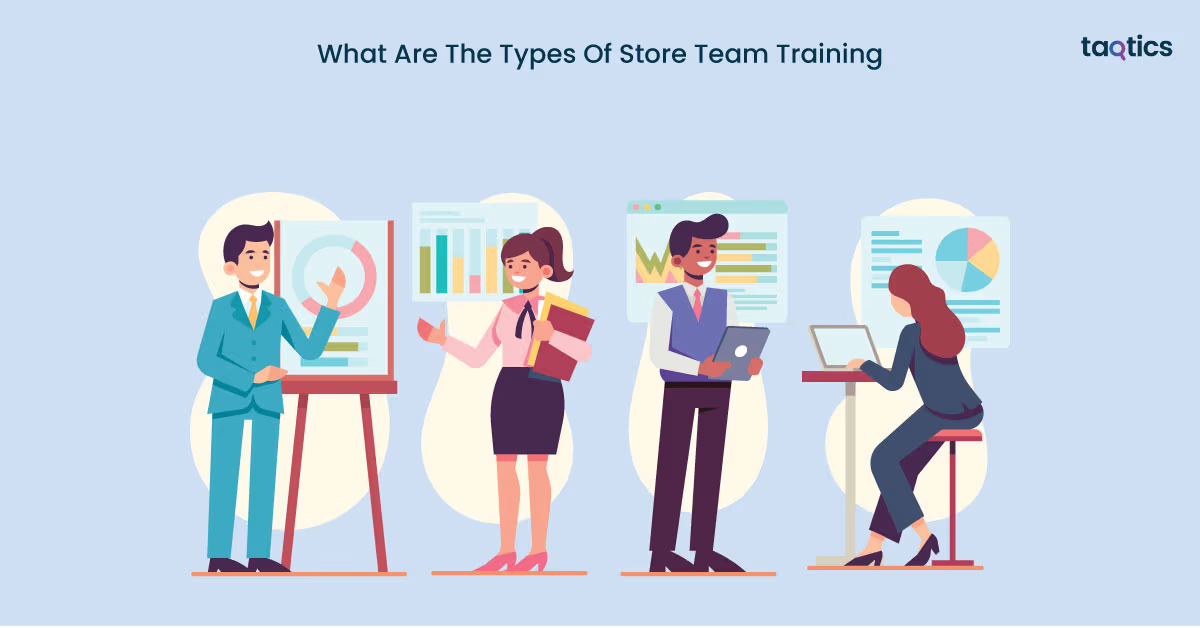
Onboarding
Onboarding is a crucial type of store team training that introduces new employees to the company’s culture, policies, and fundamental job responsibilities. This initial training sets the foundation for a successful employee experience by helping new hires feel welcomed, informed, and prepared to contribute from day one. Effective onboarding not only reduces confusion but also accelerates the time it takes for employees to become productive.
According to Glassdoor, organizations with a strong onboarding process improve new hire retention by 82% and increase employee productivity by over 70%. Additionally, the Society for Human Resource Management (SHRM) reports that effective onboarding can reduce employee turnover by up to 50% in the first year. Investing in comprehensive onboarding ensures that store teams start off on the right foot, aligned with company values and expectations.
Product Training
Product training is a vital type of store team training focused on regularly updating employees about product features, new launches, and any related policy changes. This ongoing training ensures that staff remain knowledgeable and confident when engaging with customers, enabling them to provide accurate information and relevant recommendations. Keeping the team up to date also helps quickly address customer questions and enhances the overall shopping experience.
Research from the Sales Management Association shows that organizations with continuous product training see a 23% increase in sales productivity. Additionally, a report by Retail Dive found that employees who receive regular product updates are more likely to upsell, contributing to higher average transaction values. Regular product training empowers store teams to stay informed in a fast-evolving retail environment and maintain a competitive edge.
Skills Training
Skills training is an essential type of store team training that focuses on continuously developing employees’ abilities in areas like sales techniques, customer service, communication, and problem-solving. This ongoing training helps team members sharpen their skills, adapt to new challenges, and deliver exceptional performance on the sales floor. Regular skills training ensures that employees remain confident and effective in meeting customer needs and driving store success.
According to LinkedIn’s 2024 Workplace Learning Report, companies that prioritize continuous skills training see 59% higher employee retention and a 41% increase in customer satisfaction. Additionally, Gallup research shows that well-trained employees are 21% more productive and 17% more likely to stay with their employer. By investing in skills training, retailers can build a motivated, knowledgeable team capable of exceeding sales targets and fostering strong customer relationships.
Performance Development
Performance development is a key type of store team training that involves providing employees with regular feedback, coaching, and personalized guidance to improve their skills and address any weaknesses. This ongoing process helps employees stay aligned with business goals, recognize areas for growth, and build confidence in their roles. Effective performance development fosters a culture of continuous improvement and accountability.
Research by Gallup shows that employees who receive regular coaching and feedback are 3.6 times more likely to be engaged at work. Furthermore, a study by Harvard Business Review found that companies with strong performance development programs experience 14.9% lower turnover rates. By integrating performance development into store team training, retailers can nurture talent, boost employee motivation, and enhance overall store productivity.
Choosing the right types of training helps maximize knowledge retention, boosts employee confidence, and ultimately drives better store performance. A well-rounded training approach supports continuous development and adapts to the evolving demands of retail.
What Are The Tips for Effective Store Team Training?
The tips for effective store team training helps build skilled, confident employees who can deliver outstanding customer experiences. Implementing the right strategies ensures training is engaging, relevant, and drives real improvements in performance.
Personalize Training
Tailoring training content ensures that each team member receives relevant information and skills that directly apply to their job responsibilities, which increases engagement and knowledge retention. For example, a cashier may need more focus on transaction accuracy and customer interaction, while stock associates might benefit from inventory management training.
Research from the Brandon Hall Group shows that personalized training can improve learning retention by up to 60% compared to generic training programs. Additionally, the same study found that companies using tailored learning approaches see a 30% higher employee engagement rate. By customizing training, retailers can address specific skill gaps, accelerate development, and empower employees to perform at their best.
Use Interactive Methods
Incorporating interactive methods like role-playing, simulations, and games is a powerful tip for making store team training more engaging and effective. These hands-on activities encourage active participation, helping employees practice real-life scenarios in a safe environment, which improves skill retention and boosts confidence. Interactive training also breaks the monotony of traditional lectures, making learning more enjoyable and memorable.
According to the Training Industry Report, interactive training increases knowledge retention rates by up to 75%, compared to just 5-10% for passive learning methods. Additionally, a study by the University of Colorado found that learners in interactive sessions are 90% more likely to apply skills on the job. By using interactive techniques, retailers can create dynamic training experiences that foster deeper understanding and stronger performance among store teams.
Utilize Technology
Leveraging technology is a crucial tip for effective store team training, as digital tools like eLearning platforms, mobile apps, and online knowledge bases enable flexible, on-demand learning. These technologies allow employees to access training materials anytime and anywhere, making it easier to fit learning into busy schedules and reinforcing continuous development. Technology also facilitates tracking progress, delivering personalized content, and quickly updating training with the latest information.
According to LinkedIn’s 2024 Workplace Learning Report, companies that use digital learning tools see a 35% increase in knowledge retention and a 50% faster training completion rate. Additionally, Deloitte found that organizations with strong digital learning programs improve employee engagement by 27%. By embracing technology, retailers can create scalable, efficient training programs that keep store teams well-informed and ready to perform at their best.
Provide Ongoing Support
Providing ongoing support is a vital tip for effective store team training, as continuous guidance helps reinforce learning and ensures employees can apply new skills confidently. Regular feedback, coaching sessions, and easy access to resources allow team members to clarify doubts, stay motivated, and improve performance over time. This ongoing support creates a culture of development where employees feel valued and empowered.
Research from Gallup shows that employees who receive consistent feedback are 3.6 times more likely to be engaged at work. Additionally, the Association for Talent Development (ATD) reports that continuous learning support increases knowledge retention by up to 80%. By offering ongoing support, retailers can maintain high training effectiveness and foster a motivated, high-performing workforce.
By applying proven tips for effective training, retailers can maximize learning outcomes, boost employee motivation, and create a culture of continuous growth. Well-trained teams ultimately lead to stronger sales, better service, and long-term business success.
How Should Store Employees Be Trained on Loss Prevention?
Store employees should be trained on loss prevention using a clear, practical, and ongoing approach focused on awareness, detection, and prevention strategies. First, employees should be educated on the common types of losses retailers face, such as theft (both external shoplifting and internal employee theft), inventory shrinkage, and fraud. Training should include how to identify suspicious behaviors, use surveillance equipment effectively, and follow proper protocols when addressing potential theft without escalating situations.
Role-playing scenarios and real-life case studies can help employees practice responding confidently and appropriately to theft or policy violations. Additionally, employees should be familiarized with company policies related to loss prevention, legal considerations, and reporting procedures. Regular refresher courses and updates are essential to keep staff aware of evolving tactics used by thieves.
According to the National Retail Security Survey, retailers lose approximately 1.33% of annual sales due to shrinkage, making employee training a critical tool to reduce losses. Well-trained staff can help decrease shrink rates by up to 30%, according to the Loss Prevention Research Council. Overall, effective loss prevention training combines awareness, practical skills, and clear policies to protect store assets and ensure a safer shopping environment.
What Are the Most Effective Store Team Training Tools?
The most effective store team training tools ensure operational excellence and consistent customer experiences. Taqtics offers a comprehensive platform designed to streamline and enhance store team training across multiple locations.
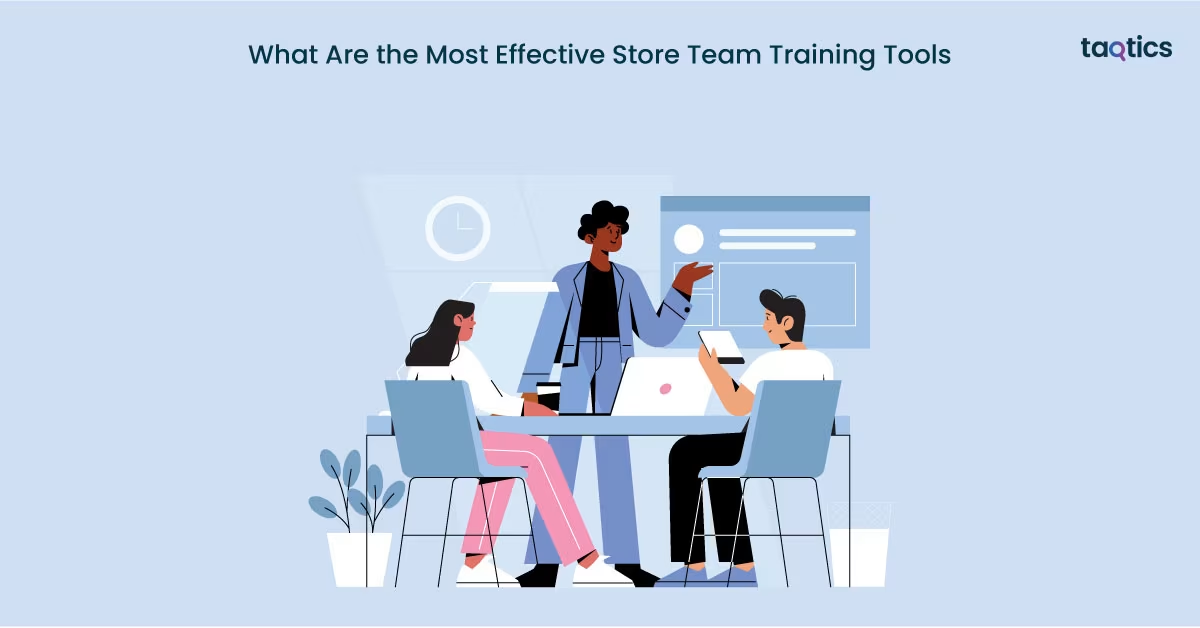
- Centralized Training Hub: Taqtics provides a centralized platform where training modules, Standard Operating Procedures (SOPs), and resources are stored, ensuring all team members have access to the latest information.
- Role-Based Training Assignments: Managers can assign training modules based on specific roles or locations, ensuring that each team member receives relevant and targeted training.
- Interactive Learning Tools: The platform supports quizzes and assessments to reinforce learning, track progress, and identify areas needing improvement.
- Real-Time Tracking and Analytics: Taqtics offers dashboards that provide insights into training completion rates, quiz scores, and engagement levels, enabling managers to monitor and support their teams effectively.
- Mobile Accessibility: With mobile-friendly access, store teams can engage in training sessions at their convenience, enhancing flexibility and participation.
By integrating Taqtics into your training strategy, retailers can ensure consistent, efficient, and scalable training for their store teams, leading to improved performance and customer satisfaction.
How Can Training Improve Employee Engagement and Retention?
Training can improve employee engagement and retention by equipping staff with the skills, knowledge, and confidence they need to perform their jobs effectively. When employees receive continuous learning opportunities, they feel valued and supported, which increases their commitment to the organization. Engaged employees are more motivated, productive, and likely to contribute positively to the workplace culture.
Data shows that 94% of employees say they would stay longer at a company that invests in their learning and development (LinkedIn). Moreover, Gallup research finds that organizations with highly engaged employees experience 59% less turnover. Providing relevant and personalized training not only enhances employees’ capabilities but also fosters loyalty, reduces burnout, and lowers recruitment costs, creating a win-win for both employees and employers.\
When and How Should You Conduct Seasonal or Refresher Training?
Seasonal or refresher training should be conducted strategically with focus on role-specific skills, updated product knowledge, and customer service techniques relevant to the upcoming busy period. Using a blend of methods, such as interactive workshops, eLearning modules, role-playing scenarios, and quick video tutorials, helps keep training engaging and accessible. Incorporating quizzes or assessments can measure understanding and identify gaps. to prepare store teams for peak periods such as holidays, sales events, or product launches when customer traffic and demands increase significantly.
Additionally, refresher sessions are valuable periodically throughout the year to reinforce key skills, update employees on new policies, or address areas where performance may have slipped. Ideally, refresher training occurs at least quarterly or biannually, depending on the store’s operational needs. Follow-up support, like on-the-floor coaching and feedback during peak times, ensures that learning is applied consistently.
According to the Association for Talent Development, refresher training can increase knowledge retention by up to 80%, making it a critical tool for maintaining high performance. By timing and tailoring refresher sessions effectively, retailers can keep their teams prepared, confident, and ready to deliver exceptional service during crucial sales periods.
What’s a Simple Checklist for Effective Store Team Training?
A simple checklist for effective store team training is well-structured, goal-oriented, and engaging. To ensure training delivers real results, it’s important to follow a simple but comprehensive checklist that covers all the essential elements. This structured approach helps align team development with business objectives and enhances overall store performance.
Start by setting clear training objectives. Identify what the program should achieve—whether it’s improving customer service, boosting sales, or reducing errors—and align these goals with your broader business priorities. Next, assess training needs by analyzing skill gaps or gathering employee feedback. Tailor training content based on specific roles—for example, cashiers may need a focus on POS systems, while sales associates may benefit more from upselling techniques.
The next step is to develop or source relevant training content. This should include both technical skills like inventory management and soft skills like communication and conflict resolution. Use a mix of delivery methods, such as eLearning, interactive workshops, videos, and role-play scenarios. Tools like Taqtics can be highly effective for providing scalable, role-based, and trackable training across store teams.
Create a realistic training schedule that includes onboarding, periodic refreshers, and seasonal sessions, while also accommodating store hours and peak periods. Assign experienced team leads or managers as trainers, ensuring they are well-prepared to deliver content clearly and confidently. To keep training engaging, actively involve learners with quizzes, scenario-based exercises, and opportunities to ask questions.
Use technology or training platforms to track employee progress and completion rates. This helps identify who may need additional support. After each session, gather feedback from employees on their experience to continuously refine and improve the training process. Finally, evaluate the impact by measuring outcomes such as improved customer satisfaction scores, higher sales, or reduced operational mistakes.
Following this checklist ensures your store team training is targeted, effective, and sustainable. With the right approach, training becomes a strategic investment that boosts employee confidence, strengthens performance, and drives long-term success.
How to evaluate training needs in a store?
To evaluate training needs in a store, one must build an effective and results-driven training program. It involves identifying gaps in employee performance, knowledge, or behavior that impact store operations, customer experience, and business goals. A systematic approach ensures that training efforts are targeted, relevant, and aligned with real challenges on the sales floor.
- Observe Daily Operations
Start by closely observing store activities. Watch how employees interact with customers, handle products, use systems (like POS), and follow procedures. Look for patterns—such as slow checkouts, missed upselling opportunities, or frequent errors—that suggest skill gaps or inconsistencies.
- Review Performance Data
Analyze key performance indicators (KPIs) such as sales numbers, customer satisfaction scores, mystery shopper results, and return rates. Poor performance in specific areas may highlight the need for targeted training (e.g., product knowledge, customer service, or inventory management).
- Conduct Employee Surveys or Interviews
Ask team members about their challenges and confidence levels. Simple surveys or one-on-one conversations can reveal areas where employees feel underprepared or would like more support. Often, frontline staff can offer insights that data alone may not capture.
- Assess Customer Feedback
Review customer reviews, feedback forms, and complaints to identify recurring issues—such as poor service, lack of product knowledge, or unprofessional behavior. This feedback helps pinpoint where training can directly improve the customer experience.
- Evaluate New Initiatives or Changes
When launching new products, systems, or policies, assess whether employees are adequately trained to implement them. Training needs often arise during periods of transition, such as seasonal peaks, promotions, or tech rollouts.
- Compare Against Job Descriptions and Standards
Cross-reference current employee performance with defined job roles and company standards. If expectations are not being met consistently, it may signal the need for refresher or role-specific training.
- Use Assessment Tools or Quizzes
Short assessments can be used to test employees’ knowledge of products, procedures, and policies. This helps identify specific areas where further training is needed.
By combining data analysis, employee input, and performance observation, retailers can accurately evaluate training needs in the store. This ensures that training is not only reactive to problems but proactive in building a high-performing, customer-focused team.
How long should a training session last?
A training session should last depending on the topic being covered, the complexity of the content, and the delivery format. However, in most cases, short, focused sessions lasting between 30 to 60 minutes are the most effective. This duration keeps employees engaged, reduces fatigue, and minimizes disruption to store operations, especially during busy periods.
For simpler topics such as product updates, customer service tips, or a specific operational task, 30-minute sessions work well. These are perfect for quick refreshers or on-the-go learning. Sessions lasting 45 to 60 minutes are more suitable when covering soft skills, systems training (like POS usage), or new procedures, where a little more depth is required. For more comprehensive training, like onboarding new employees or conducting leadership workshops, 90-minute or multi-part sessions may be necessary, but should be broken into shorter, digestible segments to maintain attention.
Shorter, modular training is backed by research. According to the National Training Laboratories, learners retain up to 75% of information when sessions are short and interactive, compared to passive, long-form lectures. Additionally, microlearning approaches, delivering content in bite-sized chunks, have proven to improve engagement and learning retention, especially in fast-paced retail environments.
Ultimately, the best approach is to combine frequent, bite-sized training sessions with on-the-job coaching, digital tools like Taqtics, and periodic refreshers. This ensures that employees continually build skills without feeling overwhelmed, while still staying productive on the shop floor.
How to measure ROI of training?
To measure ROI of training, one must ensure the training programs are delivering real business value. In a retail context, ROI reflects how well training translates into improved employee performance, customer satisfaction, operational efficiency, and ultimately, increased revenue or cost savings.
- Set Clear Objectives and KPIs
Before training begins, define what success looks like. Common KPIs include increased sales, higher customer satisfaction scores, reduced errors or shrinkage, faster onboarding times, and lower employee turnover. Establishing benchmarks gives you a way to compare performance pre- and post-training.
- Track Performance Metrics
Measure tangible outcomes such as:
- Sales performance before and after training
- Customer feedback or Net Promoter Scores (NPS)
- Inventory accuracy and error rates
- Time-to-competency for new hires
- Employee retention and absenteeism rates
For example, if a team receives training on upselling and average transaction value rises by 15%, that improvement can be directly linked to the training.
- Use Surveys and Feedback
Collect employee and customer feedback to gauge the perceived value of the training. Are employees more confident? Do customers report better experiences? This helps capture qualitative benefits that might not show up immediately in financial metrics.
- Calculate ROI Formulaically
A common formula to measure training ROI is:
ROI (%) = [(Training Benefits – Training Costs) / Training Costs] × 100
For example, if training led to a $10,000 increase in monthly sales and cost $3,000 to deliver, the ROI would be:
[(10,000 – 3,000) / 3,000] × 100 = 233%
- Leverage Technology
Platforms like Taqtics offer real-time tracking and analytics to measure training completion rates, knowledge assessment scores, and performance improvements—making it easier to connect training efforts to business outcomes.
Measuring training ROI is all about how well training aligns with your store goals, improves team performance, and drives long-term success. With the right data and tools in place, training can be optimized to deliver consistent, measurable value.
Is it necessary to invest in technology for retail staff training?
Yes, investing in technology for retail staff training is increasingly necessary, especially in today’s fast-paced, multi-location retail environments. Traditional training methods like manuals or in-person-only sessions are often inefficient, inconsistent, and difficult to scale. Technology, on the other hand, offers flexible, engaging, and measurable learning experiences that meet the evolving needs of modern retail teams.
Digital training platforms like Taqtics allow retailers to centralize training materials, deliver role-specific content, and track progress in real time. These tools make it easier to roll out updates across multiple stores, ensure consistent knowledge across teams, and provide on-demand access to resources, ideal for part-time staff or during seasonal peaks. Features like mobile access, interactive quizzes, and automated assessments enhance engagement and retention.
According to LinkedIn’s 2024 Workplace Learning Report, companies using digital learning tools experience a 50% faster training completion rate and 35% higher retention of knowledge compared to traditional methods. Additionally, technology helps reduce administrative workload, improve compliance, and adapt quickly to new product launches or operational changes.

